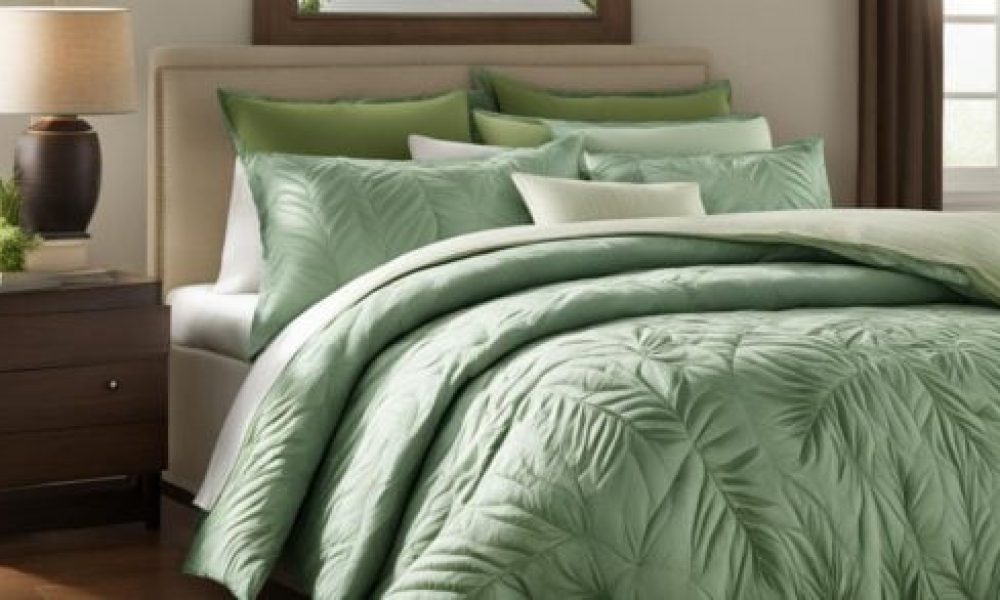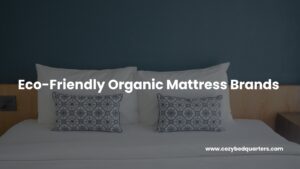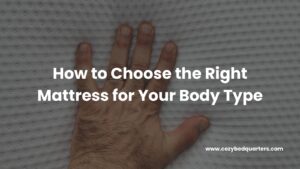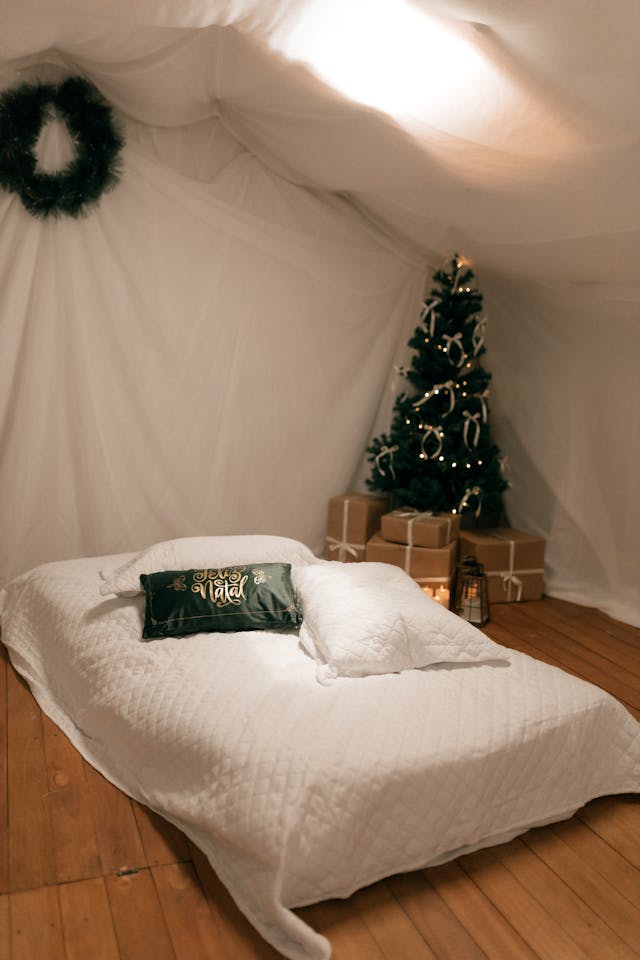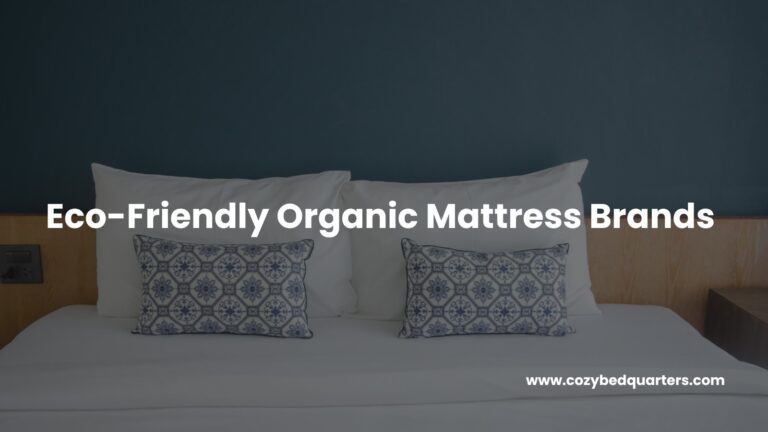Benefits of Eco Friendly Bedding: 21 Powerful Reasons to Switch Today
Discover the benefits of eco friendly bedding for sleep quality, health, and sustainability. A simple change in your sheets can make a big impact—especially with organic bedding and sustainable sheets that feel great and last.
Key Takeaways: Benefits of Eco Friendly Bedding
- Answer first: The benefits of eco friendly bedding include better sleep, fewer irritants, and a smaller footprint.
- Switching reduces environmental impact with sustainable bedding materials and ethical production.
- Trusted certifications like GOTS and Oeko-Tex help you spot safer, non-toxic fabrics.
- Organic bedding and eco-conscious sheets blend comfort, design, and durability.
- Care routines (cold wash, gentle detergent, line drying) extend fabric life and save energy.
Why Choose Eco Friendly Bedding?
Short answer: Eco friendly bedding supports your health and the planet while upgrading comfort.
The benefits of eco friendly bedding range from fewer skin irritants to noticeably cooler, more breathable sleep.
Made with organic cotton, bamboo, hemp, or Tencel, these fabrics feel gentle on skin and reduce exposure to harsh chemicals.
They also elevate your bedroom’s aesthetic while aligning with long-term wellness goals.
For a deeper dive on material performance and sleep quality, see Sleep Foundation.

Exploring sustainable décor too? Pair eco-conscious bedding with low-VOC paint and natural fiber rugs.
If you’re building a fully green sleep setup, our guide to eco-friendly sleep solutions walks through mattresses, toppers, and pillows that complement sustainable sheets.
Eco Friendly vs Conventional Bedding
Short answer: Conventional sheets often rely on pesticides and chemical finishes; eco options aim to minimize both.
Conventional bedding commonly uses polyester blends, formaldehyde-based resins, and dye processes that can irritate sensitive skin.
Eco-friendly bedding favors organic fibers and safer dyes, offering breathable comfort and longevity with fewer inputs.
- Conventional: Polyester blends, chemical dyes, pesticide-heavy cotton.
- Eco Friendly: Organic cotton, bamboo, hemp, and Tencel.
- Impact: Conventional sheets typically use more water and chemical inputs; eco options reduce both significantly.
For a style-first look at sustainable options and bedroom inspiration, browse Architectural Digest galleries. And if you’re eyeing linen, percale, or sateen sets with better sourcing, Parachute Home showcases collections with quality materials and timeless design.
Environmental Impact
Short answer: Choosing sustainable bedding can lower carbon, reduce water use, and improve end-of-life outcomes.
- Carbon: Organic farming and cleaner processing can use considerably less energy than conventional methods.
- Water: Fibers like hemp and certain bamboo processes can require less irrigation than standard cotton systems.
- Biodegradability: Natural fibers break down more readily than synthetics, reducing long-term waste.
If you’re planning a full room refresh, see our sustainable sleep products guide for ideas that complement eco-friendly sheets—from curtains to throws—without sacrificing design.
Health Advantages
Short answer: Fewer harsh chemicals and more breathable fibers support calmer skin and easier breathing.
Eco-conscious sheets avoid many problematic finishes and dyes. That’s especially helpful for children, asthma, eczema, or sensitive skin.
Hypoallergenic options like organic cotton and Tencel encourage airflow and moisture management for more restorative sleep.
For evidence-based insights on sleep health and materials, explore
Sleep Foundation.

Maximizing Comfort and Longevity
Short answer: Buy certified, wash cool, and skip harsh softeners to keep fibers strong.
To get the most from your bedding, choose certified fabrics with GOTS or Oeko-Tex labels.
Wash in cold water with gentle detergent, avoid heavy softeners or bleach, and line-dry when possible to save energy and preserve hand feel.
These small habits help sustainable sheets stay comfortable and durable for years.
Want help choosing fabric types and weaves? Our overview of advantages of eco friendly bedding breaks down breathability, feel, and durability by material.
Buyer’s Guide: Certifications to Look For
Short answer: Look for GOTS, Oeko-Tex Standard 100, Fair Trade, and Cradle to Cradle.
- GOTS: Ensures organic status across the supply chain and ethical production.
- Oeko-Tex Standard 100: Verifies textiles have been tested for harmful substances.
- Fair Trade Certified: Supports fair wages and safer working conditions.
- Cradle to Cradle: Focuses on circular design, safer chemistry, and end-of-life pathways.
For a practical shopping lens—feel, weave, and fit—compare product details at
Parachute Home,
then cross-check material pros/cons with
Sleep Foundation.
Trusted Brands
Short answer: Choose brands that publish clear material specs and recognized certifications.
- Parachute Home – Organic and natural fiber collections with timeless design.
- Sleep Foundation – Expert guides and reviews to compare materials and weaves.
- Architectural Digest – Inspiration galleries for eco-friendly bedroom design ideas.
Design Benefits
Short answer: Natural fibers pair beautifully with sustainable furniture and low-VOC finishes.
Eco-conscious sheets complement reclaimed wood, rattan, cork, and wool accents.
Add greenery and maximize natural light to enhance mood and air quality.
For visual inspiration, browse
Architectural Digest’s design galleries.

FAQ
- What are the main benefits of eco friendly bedding?
- It can promote better sleep, reduce skin irritation, and support sustainability with safer materials and ethical production.
- Which materials are best?
- Organic cotton, hemp, bamboo, and Tencel stand out for softness, breathability, and end-of-life benefits. Compare these materials at the Sleep Foundation.
- Does eco friendly bedding help with allergies?
- Yes. Hypoallergenic fibers and fewer chemical finishes can help sensitive sleepers, kids, and anyone with asthma or eczema.
- Where can I shop?
- Start with brands that disclose certifications and fabric content. For examples and quality benchmarks, see Parachute Home.
Final Thoughts
The benefits of eco friendly bedding reach beyond comfort—supporting healthier skin, better sleep, and a lighter environmental footprint.
For next steps, explore our in-depth guides on eco-friendly sleep solutions, or browse our breakdown of co bedding advantages
to find the best fabrics for your space.
Related Reading
From Cozy Bed Quarters
- Advantages of Eco Friendly Bedding
- Sustainable Sleep Products for an Eco-Friendly Bedroom
- Eco-Friendly Sleep Solutions for a Healthier Planet
From Trusted Sources

